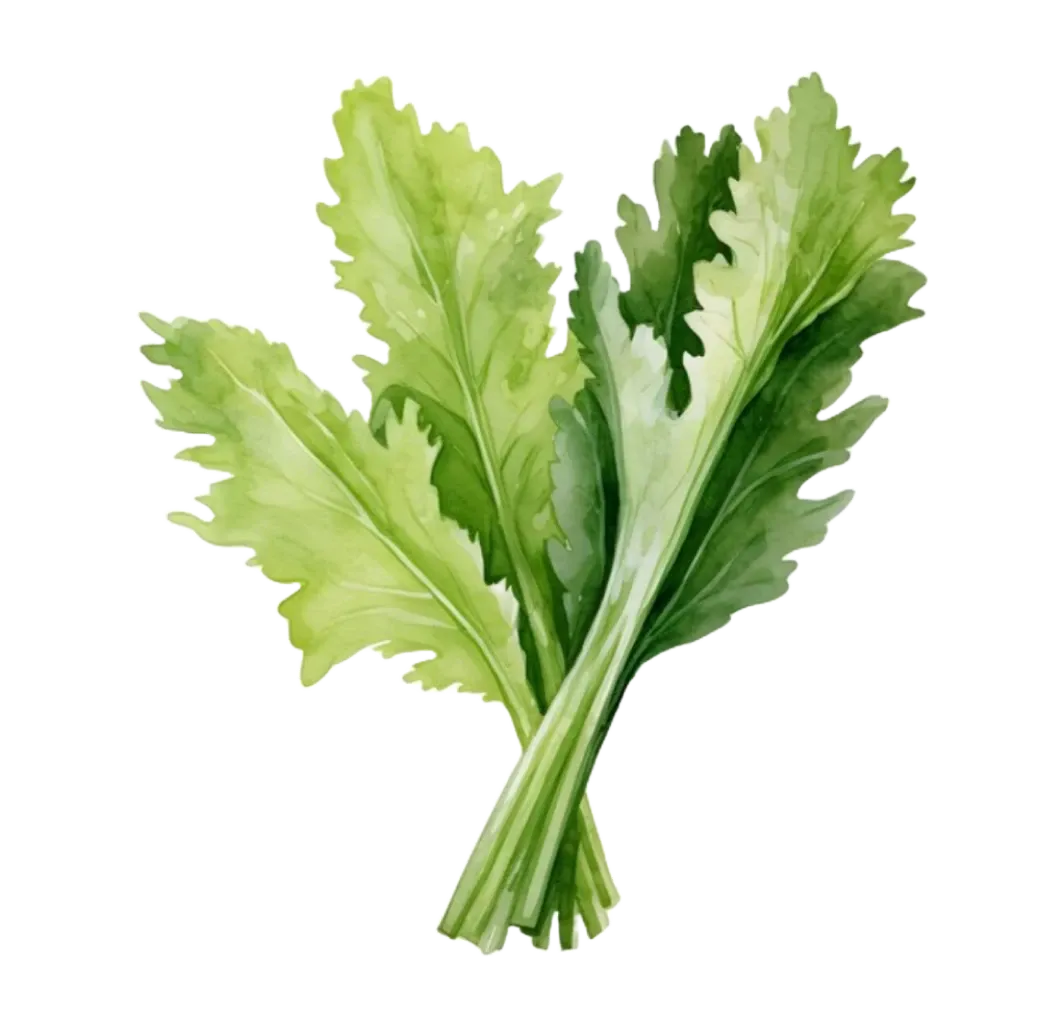The Health Benefits of Mizuna: A Peppery and Nutrient-Dense Asian Green
Introduction
Mizuna, a leafy green vegetable native to Japan, is part of the mustard family and is known for its slightly peppery and mild flavor. Often used in salads, stir-fries, and soups, mizuna is a versatile green that’s packed with essential vitamins, minerals, and antioxidants. Its tender leaves and mild taste make it a great addition to a variety of dishes while offering a range of health benefits.
Health Benefits of Mizuna
- Boosts Immune Function
Mizuna is rich in vitamin C, an antioxidant that plays a key role in boosting the immune system. Regular consumption of vitamin C-rich foods like mizuna can help protect the body from infections and promote faster recovery from illnesses.
- Supports Bone Health
Mizuna is an excellent source of vitamin K, which is essential for bone health. Vitamin K improves calcium absorption and helps maintain bone density, reducing the risk of fractures and osteoporosis.
- Rich in Antioxidants
Mizuna is loaded with antioxidants such as vitamins A and C, which help protect cells from oxidative stress. These antioxidants reduce inflammation and may lower the risk of chronic diseases such as heart disease and cancer.
- Supports Eye Health
The high vitamin A content in mizuna supports eye health by promoting good vision and protecting against age-related eye disorders. Regular consumption of vitamin A-rich foods like mizuna can help prevent conditions such as macular degeneration and cataracts.
- Promotes Healthy Digestion
Mizuna’s fiber content aids in promoting healthy digestion by supporting regular bowel movements and maintaining a healthy gut. Fiber-rich foods like mizuna can also help reduce bloating and improve overall digestive health.
Creative Ways to Enjoy Mizuna
Mizuna’s versatility makes it a great addition to a variety of dishes:
- In Salads: Use raw mizuna leaves in salads for a peppery flavor that pairs well with citrus fruits, nuts, and vinaigrettes.
- In Stir-Fries: Add mizuna to stir-fries with garlic, ginger, and soy sauce for a quick and nutritious meal.
- In Soups: Stir mizuna into soups or broths at the end of cooking to retain its tender texture and nutrient content.
- In Smoothies: Blend mizuna into green smoothies for a mild, nutrient-rich addition that boosts your intake of vitamins and antioxidants.
- Sautéed: Sauté mizuna with olive oil, lemon, and garlic for a simple, flavorful side dish.
Conclusion
Mizuna is a nutrient-dense leafy green that offers a wide range of health benefits, from boosting immune function and supporting bone health to promoting digestion and eye health. Its mild, peppery flavor makes it a versatile ingredient that can be used in salads, soups, and stir-fries. Adding mizuna to your diet is an easy and delicious way to enhance your meals while boosting your overall health.
FAQs About Mizuna
- Is mizuna good for weight loss?
Yes, mizuna is low in calories and high in fiber, making it a filling yet nutritious option for those looking to manage their weight.
- How should I store mizuna?
Store mizuna in the refrigerator, wrapped in a damp paper towel or in a plastic bag, where it will stay fresh for up to five days.
- Does mizuna lose nutrients when cooked?
Mizuna retains most of its nutrients when lightly sautéed or added to soups at the end of cooking. Overcooking may reduce its vitamin C content.
- Is mizuna AIP diet compliant?
Yes, mizuna is compliant with the AIP diet and can be safely consumed by individuals following the autoimmune protocol.
- Is mizuna Low-FODMAP?
Yes, mizuna is considered Low-FODMAP and safe for individuals with digestive sensitivities.
- Is mizuna Low Histamine?
Mizuna is generally considered low in histamine and is well-tolerated by individuals with histamine intolerance.
- Is mizuna Keto-friendly?
Yes, mizuna is keto-friendly due to its low carbohydrate content, making it an excellent addition to low-carb meals.
Recipes
Check out our meal planning service by following these recipes:
Mizuna Myoga Salad with Soy Dressing









